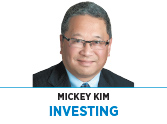Subscriber Benefit
As a subscriber you can listen to articles at work, in the car, or while you work out. Subscribe Now This year’s NHL Playoffs have a scintillating storyline as my adopted Vegas Golden Knights, an expansion team playing its inaugural season, have defied both history and the odds to make it to the Stanley Cup Finals against the Washington Capitals.
This year’s NHL Playoffs have a scintillating storyline as my adopted Vegas Golden Knights, an expansion team playing its inaugural season, have defied both history and the odds to make it to the Stanley Cup Finals against the Washington Capitals.
Hockey also holds important investing lessons, according to Clifford Asness of AQR Capital Management and New York University professor Aaron Brown in their recent paper, “Pulling the Goalie: Hockey and Investment Implications.”
During the NHL’s regular season, a team gets two points for a win, one for a loss in overtime, and none for a loss. A team is at “full strength” with three offensive and two defensive players and a goalie on the ice. If a team is trailing, the coach can “pull the goalie” to add a sixth attacker to gain a scoring advantage.
This is a dramatic move that risks giving up an easy, deficit-increasing “empty net” goal. So, most coaches down one goal don’t “pull” until there is less than two minutes to play. The authors argue coaches are focusing on the wrong risk, given that losing by one or even five goals is worth the same zero standings points, so they should “pull” much sooner than typical (i.e. with 5:40 remaining down one goal, 11:40 down two, and 17:50 down three).
The authors built a model using five inputs: the probability of scoring goals with 1) a goalie in place, 2) the goalie pulled for an extra attacker, 3) a goalie in place but the other team has pulled its goalie, 4) the goal differential and 5) the time remaining.
They found that the team “pulling” nearly quadruples the probability of its opponent’s scoring while not even doubling its own chances. However, because maximizing standings points is the objective (i.e. not minimizing score differential), coaches need to be much more aggressive and accept higher scoring volatility trying to turn probable losses into possible wins.
Investors make this same mistake when they focus on the volatility of their portfolio rather than the probability of an unacceptable level of return over their risk horizon, according to the authors. Thus, “if increased portfolio volatility comes with sufficient excess expected return, over long periods of time a portfolio can have a better chance of an acceptable return by taking more short-term volatility.”
Why do hockey coaches wait too long to “pull” and football coaches fail to “go for it” on fourth down often enough, even when statistics prove these “aggressive” moves lead to more wins?
“First, coaches are not actually rewarded for winning,” the authors write “They are rewarded for being perceived as good coaches. Essentially, winning ugly is undervalued versus losing elegantly; and losing ugly can be career suicide.”
This coaching affliction also applies to portfolio management and stock selection. Numerous academic studies spanning decades of returns show “cheap” value stocks tend to outperform “expensive” growth stocks over long periods. However, these “cheap” stocks also tend to be “worse” companies that have challenges and are out of favor.
Thus, portfolio managers who own the expensive stocks (like Amazon) can be perceived as prudent while those who own the cheap stocks seem rash, even though the data says otherwise. As hockey fan John Maynard Keynes said, “Worldly wisdom teaches that it is better for reputation to fail conventionally than to succeed unconventionally.”•
__________
Kim is Kirr Marbach & Co.’s chief operating officer and chief compliance officer. He can be reached at 812-376-9444 or mickey@kirrmar.com.
Please enable JavaScript to view this content.
